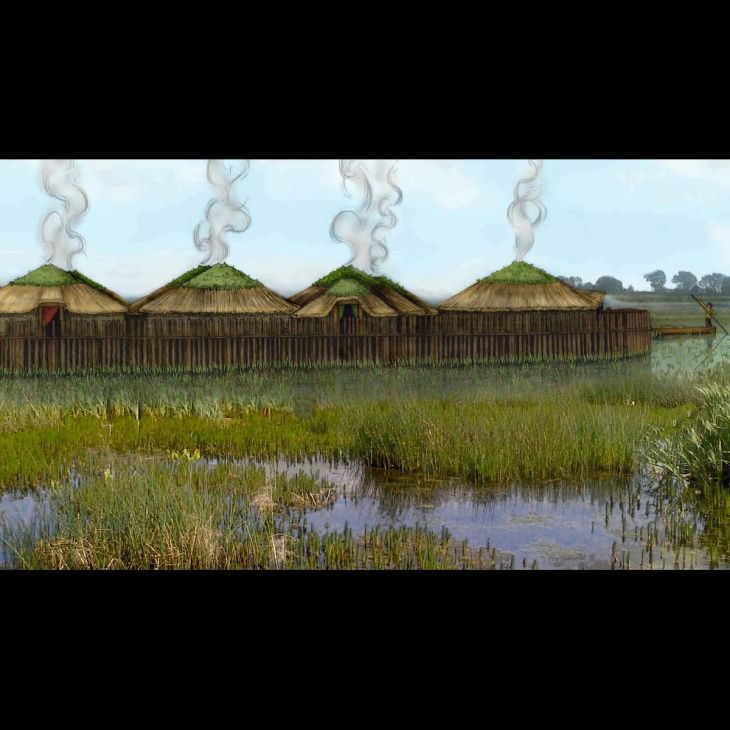A major report on the remains of a stilt village that was engulfed in flames almost 3,000 years ago reveals in unprecedented detail the daily lives of England’s prehistoric fenlanders.
Must Farm, a late Bronze Age settlement, dates to around 850BC, with University of Cambridge archaeologists unearthing four large wooden roundhouses and a square entranceway structure – all of which had been constructed on stilts above a slow-moving river.
The entire hamlet stood approximately two metres above the riverbed, with walkways bridging some of the main houses, and was surrounded by a two-metre-high fence of sharpened posts.
The settlement was less than a year old when it was destroyed by a catastrophic fire, with buildings and their contents collapsing into the muddy river below. The combination of charring and waterlogging led to exceptional preservation.
The site has been described as “Britain’s Pompeii”.
Years of research conducted on thousands of artefacts from the site have now shown that early Fen folk had surprisingly comfortable lifestyles, with domestic layouts similar to modern homes, meals of “honey-glazed venison” and clothes of fine flax linen, and even a recycling bin.
A member of the Cambridge Archaeological Unit displays one of the Bronze Age pots unearthed at the Must Farm site.
A member of the Cambridge Archaeological Unit displays one of the Bronze Age pots unearthed at the Must Farm site.
The settlement-on-stilts also contained a stack of spears with shafts over three metres long, as well as a necklace with beads from as far away as Denmark and Iran, and a human skull rendered smooth by touch, perhaps a memento of a lost loved one.
The Cambridge archaeologists say the site provides a unique “blueprint” for the circular architecture, home interiors and overall domesticity of those who inhabited the swampy fenland of East Anglia some eight centuries before Romans set foot on British shores.
Full findings from the Must Farm site – excavated by the Cambridge Archaeological Unit (CAU) in 2015-16 after its discovery on the edge of Whittlesey near Peterborough – are published in two reports, both made available by Cambridge’s McDonald Institute for Archaeological Research.
“These people were confident and accomplished home-builders. They had a design that worked beautifully for an increasingly drowned landscape,” said CAU’s Mark Knight, report co-author and excavation director.
“While excavating the site there was a sense that its Bronze Age residents had only just left. You could almost see and smell their world, from the glint of metal tools hanging on wattled walls to the sharp milkiness of brewed porridge.”
The ruins of five structures were uncovered, along with walkways and fencing, but the original settlement was likely twice as big – half the site was removed by 20th century quarrying – with researchers saying it may have held up to sixty occupants in family units.
The river running underneath the community would have been shallow, sluggish and thick with vegetation. This cushioned the scorched remains where they fell, creating an archaeological “mirror” of what had stood above – allowing researchers to map the layout of the structures.














